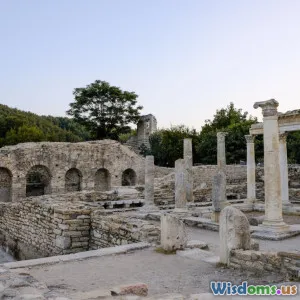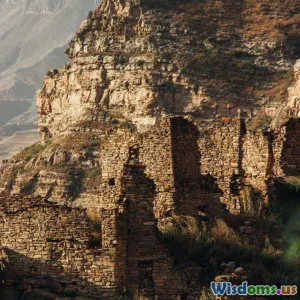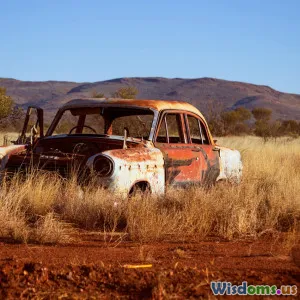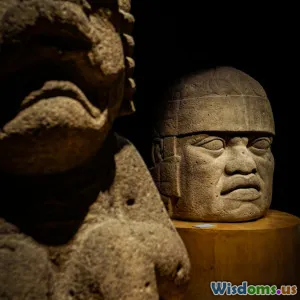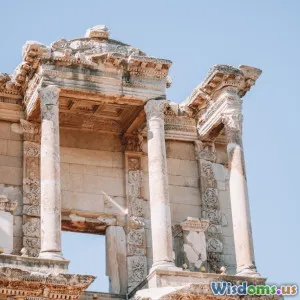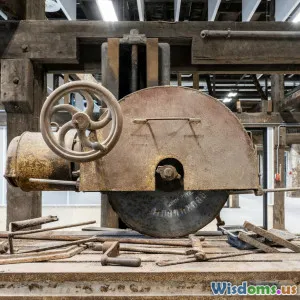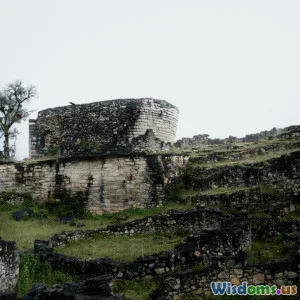
Personal Story Exploring the Ruins of the Mysterious Chachapoya
7 min read An immersive personal journey through the enigmatic ruins of the Chachapoya civilization. (0 Reviews)
Personal Story Exploring the Ruins of the Mysterious Chachapoya
Introduction: Journey to the Lost Cloud Warriors
Few ancient civilizations captivate the imagination quite like the Chachapoya. Often overshadowed by the grandeur of the Incas, these enigmatic “Cloud Warriors” thrived in the cloud forests of Peru’s Amazonas region, crafting impressive stone communities that cling to cliffs and valleys shrouded by mist. My adventure began with little more than curiosity and a passion for history, driving me deep into the Andean wilderness to uncover firsthand the legacy left by this remote society. What I found was more than a trip into the past—it was a vivid glimpse into a mysterious world that has only recently started to surrender its secrets to modern archaeology.
The Allure of the Chachapoya: Whispered Legends and Lost Cities
The Chachapoya culture flourished roughly between 900 and 1470 AD, surviving until the Inca conquest and later Spanish colonization. Yet, unlike their more famous neighbors, their stunning achievements remained cloaked beneath dense jungle canopy for centuries. Early explorers described the ruins with a sense of mystique: circular stone tombs like those at Revash, fortress-like cities perched atop hilltops such as Kuelap, and intricate sarcophagi cut into cliffsides.
I was drawn to Kuelap in particular—the so-called “Machu Picchu of the North.” This vast citadel sits at 3,000 meters above sea level and comprises massive limestone walls 20 meters high, enclosing more than 400 circular stone structures. Local guides told me stories passed down from generation to generation, punctuated by enigmatic ruins and carved reliefs whose meanings are still debated.
Trekking Through Time: My Expedition to Kuelap
Setting out for Kuelap required a strenuous three-day trek through rugged terrain, past rivers swollen by Andean rain, and beneath a jungle canopy humming with life. The remoteness is part of the site’s charm and mystery—you don’t simply stumble upon this place; you essentially return after centuries of wilderness reclamation.
Arrival and First Impressions
Standing before Kuelap’s towering walls for the first time was overwhelming. The precision of the stonework, made without metal tools, suggested a sophisticated culture deeply connected to its environment. What struck me was how the site seemed designed both for defense and for ritual sometimes, as evidence of strategically narrow entrances mixed with ceremonial plazas unfolded.
Inside the Fortress Walls
As I wandered between round stone houses, many still with original plaster traces, I was reminded of the accounts of early chroniclers who described this society as rich in textiles and metallurgy. Archaeological evidence now also attributes early advancements in agriculture and ecological adaptation to the Chachapoya, enabling them to thrive in an ecosystem often deemed hostile.
Small findings during the tour, such as pottery shards decorated with distinctive geometric designs and human bones found in nearby sarcophagi, underscored the Chachapoya’s unique beliefs about death and ancestry. These mortuary practices are among the most fascinating elements documented, reflecting a complex spiritual life.
Revash: The Cliff Tombs That Defy Time
Next, I ventured to Revash, a lesser-known site containing funerary chambers perched on vertical cliff faces. These small, house-shaped tombs were painted with red, white and black motifs, remarkably preserved against the humid environment.
Mystery hangs over why the Chachapoya chose such precarious locations for their dead. Some scholars hypothesize it could signify a spiritual ascent or protection from grave robbers. Witnessing these tombs carved into colossal natural fortresses personally impressed upon me the lengths this culture went to honor its dead in aesthetically and symbolically profound ways.
Archaeological Insights and Modern Discoveries
Recent breakthroughs using technologies like LiDAR have revealed new Chachapoya sites around the southeastern Peru region, broadening our understanding of their societal complexity. Genetic studies of recovered remains have also uncovered intriguing links between the Chachapoya and other Andean populations, indicating dynamic interactions long before Inca dominance.
In conversation with archaeologists working near my route, I learned that conservation efforts face challenges posed by tourism and natural decay. However, public awareness has increased, fostering deeper respect for this civilization’s contributions to pre-Columbian history.
Conclusion: The Enduring Legacy of the Cloud Warriors
My days spent within the ruins of the Chachapoya have left me transformed. This civilization embodies resilience, ingenuity, and mystery—qualities reflected in their stone fortresses rising through the clouds and their enigmatic funerary rites.
Exploring these ruins is more than admiring ancient architecture; it is engaging with a culture that thrived on the edges of the known world, forging a legacy only now emerging from obscurity through dedicated scholarship and courageous exploration.
For anyone fascinated by ancient civilizations or archaeological mysteries, the Chachapoya ruins offer an unparalleled window into a forgotten chapter of human history—one that broadens our understanding of identity, adaptation, and cultural memory amid nature’s enveloping embrace.
Embark on your own journey to Peru’s cloud forests and discover the secrets of the Chachapoya—where every stone tells a story, and every ruin whispers of a lost empire waiting to be rediscovered.
Rate the Post
User Reviews
Popular Posts










